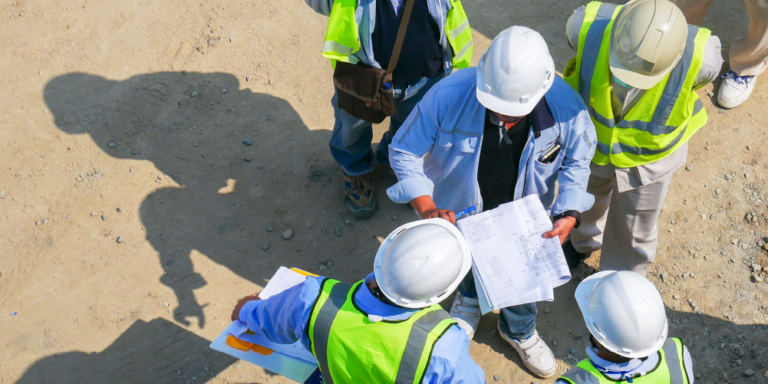— 9 min read
What to Expect During an OSHA Inspection — and How to Prepare


Last Updated Sep 1, 2024

Clark Jensen
Strategic Product Consultant, Quality & Safety
10 articles
Clark Jensen joined Procore as a Senior Strategic Product Consultant, Quality & Safety where he spearheads product knowledge education and executes product demonstrations. He brings several years of experience in roles both on and offsite as a former senior project safety manager for a general contractor in Salt Lake City, and a senior risk control consultant for a large U.S.-based insurance firm.

Bob Hanes
Founder
15 articles
Bob Hanes is a professional writer and entrepreneur. He previously worked as a military sales and applications engineer for an aerospace firm, and cofounded a biotech company that creates drug screening solutions for the pharmaceutical industry. Bob has an MBA from the University of Buffalo in Logistics, Materials, and Supply Chain Management, and a BE in Mechanical Engineering. He is an avid Buffalo Bills fan.
Last Updated Sep 1, 2024

Occupational Safety and Health Administration (OSHA) construction site inspections ensure the safety and health of workers in one of the most hazardous fields in the U.S. Understanding what to expect during an OSHA inspection — and how to effectively prepare for one — can be vital for construction companies.
Let's look into what to expect during these inspections, including the stages involved and the potential outcomes. We’ll also explore best practices to proactively manage worker safety, including the adoption of a safety-centric culture and leveraging technology. By prioritizing safety and adopting proactive strategies, construction companies can significantly reduce risks, align with OSHA standards, and contribute to a safer, healthier workplace.
Table of contents
Types of OSHA inspections
Various construction workplace scenarios can trigger OSHA inspections. Below are some of the more common examples.
Complaint-based inspections
If an employee, union, or external party files a complaint about a specific hazard on a construction site, OSHA inspectors — also known as compliance officers — will investigate the issue. When this occurs, the inspector primarily focuses on investigating the issue stated in the complaint. However, inspectors have the authority to cite the site for any immediate life and health dangers discovered during the inspection, even if they aren’t related to the complaint at hand. This process ensures addressing all hazardous aspects of the site.
Scheduled inspections
Scheduled inspections are regular OSHA activities that analyze systemic safety concerns instead of focusing solely on obvious issues. These comprehensive inspections assess adherence to several OSHA standards applicable to high-risk areas like confined space entry, hot work procedures, fall protection, electrical safety practices, and conditions leading to caught-between or struck-by accidents. These inspections often result in actionable feedback, allowing construction sites to improve their safety protocols and practices.
Learn more: The top OSHA violations in construction
Inspections triggered by visible hazards
OSHA has the authority to intervene immediately if they notice an unsafe situation on a construction site, even during an unplanned visit. This may happen if a compliance officer notices hazards that present immediate danger to the health and life of people onsite.
If an inspector notices a hazard, they can halt work, conduct a thorough investigation, and even issue citations for safety violations. This process can lead to prompt corrective action and prevent future incidents.
Invitational inspections
If a general contractor or site superintendent wants expert advice on improving safety, they can invite OSHA inspectors to their site for a consultation. These proactive inspections foster a cooperative relationship between OSHA and the contractor.
During these inspections, OSHA inspectors provide recommendations and advice but usually don't issue citations. This approach shows the contractor's commitment to worker safety and can result in a stronger safety culture and better compliance, leading to fewer accidents and injuries.
Incident or injury-triggered inspections
One of the primary reasons OSHA visits construction jobsites is for inspections due to an incident or injury. Employers must legally report severe incidents, such as hospitalization, amputation, loss of an eye, or a fatality, to OSHA within a specific period.
OSHA conducts investigations following these reports to identify safety standard violations that may have contributed to the incident. These inspections aim to prevent future accidents from occurring and ensure worker safety.
Each type of inspection serves a critical function in maintaining safety standards at construction sites. By understanding the triggers and focus areas for each type of inspection, contractors and subcontractors can better prepare for OSHA inspections and proactively address safety issues. Let’s jump into each stage of an OSHA inspection.
Go beyond OSHA regulations.
The Procore Safety Qualified program provides construction professionals with everything they need to know to create a culture of safety.

Courses about construction.
For construction.
Unlock your career potential with our free educational courses on Health & Safety, Data in Construction, and more.
The OSHA inspection process: 6 key steps
When an OSHA inspection takes place at a construction site, contractors can expect OSHA inspectors to follow a set procedure. Understanding each stage of the process can help construction organizations prepare for their inspections.
1. Preparation & initial arrival
Before an inspector arrives on the construction site, they collect key background information about the site and its operations: past inspection history, utilized processes, and applicable OSHA rules. Upon their arrival at the jobsite, the inspector validates their identity to the company. This step confirms that an official inspection will take place.
In some cases, OSHA might choose to do a remote inspection via phone or fax for “lower-priority” hazards that can be corrected easily and quickly or don’t present an immediate danger. For example, a minor electrical issue or non-compliance with signage requirements might be considered lower priority.
After remote action from OSHA, the employer must respond in writing within five working days, identifying any problems found and noting corrective actions taken or planned. If the response is adequate and the complainant is satisfied with the response, OSHA generally will not conduct an on-site inspection.
2. Opening conference
Upon arrival at the workplace, the OSHA inspector presents their credentials to the employer, including a photograph and a serial number. The inspector then holds an opening conference with the employer and the employee representative. This meeting is the initial introduction between the OSHA inspector and the site representatives — usually the site manager, safety officer, and employee representative.
The employee representative — who is selected by the workers and not the employer — plays a crucial role in the inspection process. During this dialogue, the inspector specifies the inspection's scope, outlines the purpose of the audit, and responds to any inquiries from the representatives. The inspector also requests documentation, such as injury and sickness logs, training records, or written safety plans.
3. Walkthrough inspection
After the opening meeting, the inspector and site representatives do a walkthrough of the site, trying to spot any dangerous or unhealthy situations or practices. The inspector might take photos or measurements and document the observed conditions in detail. The inspector promptly addresses any immediate dangers to life and health. The Employee Representative has the right to accompany the inspector during the inspection.
4. Employee interviews
During inspections, inspectors and employees may meet privately to discuss vital safety information. Employees have the right to request these private interviews with the inspector, and their responses remain confidential. If an employee doesn't feel comfortable, they can defer the interview or request their direct supervisor, employee representative, or union representative to be present during the interview. Companies can teach their employees about their rights during these interviews. Interviews help inspectors gather information about safety practices, training practices, protective equipment use, and other workplace conditions that workers experience firsthand.
5. Closing conference
After the walkthrough and the interviews, the inspector holds a closing conference with the employer and the employee representative. During this meeting, the inspector discusses their findings, including any unsafe conditions or practices identified during the inspection and any citations that may be issued. This conversation gives everyone an opportunity to clarify questions and misunderstandings, and provides an understanding of the necessary steps to take to reach compliance.
6. Post-inspection actions
After the inspection, the inspector compiles a report of the findings. OSHA issues citations if violations occur. The citation describes the nature of the violation, proposes a timeline for correction, and assesses a penalty amount if applicable. Employers must correct cited conditions before the deadline, pay any penalties, or dispute the findings.
Preventing OSHA inspections & citations
While there is no way for construction companies to prevent OSHA inspections entirely, they can take steps to improve jobsite safety in an effort to reduce the risk of injury or complaint that may trigger an inspection. Ultimately, companies that know what to expect during an OSHA inspection — and train their workforce to prepare for one — have little to fear.
In order to prevent OSHA citations, companies should consider adopting proactive strategies that not only ensure compliance with safety regulations, but also foster a culture of safety within their organization.
Take a proactive approach to safety
To prevent OSHA citations, there are definitely measures a construction company can take to mitigate risks before hazards occur.
Regular safety audits, risk management efforts, and thorough hazard assessments are crucial steps to ensure compliance with safety regulations. Implementing a proactive approach can demonstrate to OSHA your company's commitment to maintaining a safe work environment, preventing accidents, and violations.
Foster a culture of safety & compliance
Engaging all levels of the organization in safety measures is key to cultivating a safety-centered culture that reduces the likelihood of OSHA citations. Regular safety meetings, continuous employee training, and clear communication about safety expectations can encourage employees to report unsafe conditions and actively participate in safety initiatives. Building a culture of safety-oriented compliance keeps everyone onsite safe.
Learn more: Creating a Culture of Safety in Construction
Use software to track compliance
Leveraging technology is an effective strategy for improving safety practices and preventing OSHA citations. Construction management software enables easy documentation of safety meetings and employee training tracking, and real-time communication of safety issues, simplifying the process of demonstrating compliance during an OSHA inspection. It ensures safety is always top of mind, simplified record keeping, and makes managing safety practices straightforward.
Prepare for potential OSHA interviews
Making sure employees know what to expect during an OSHA inspection can contribute to better outcomes. This process includes informing them about their rights during an OSHA interview, such as the option to request the presence of a union representative or a supervisor. This preparation helps to avoid confusion or panic when OSHA inspectors arrive.
Act in good faith
The way a company interacts with OSHA and its inspectors significantly impacts the outcome of inspections and any penalties incurred. OSHA differentiates between companies that act "in good faith" and those that commit "willful violations."
"Good faith" companies actively cooperate with OSHA inspections, encourage employee participation, and promptly address safety concerns. They invite OSHA for voluntary inspections, implement thorough safety training, and maintain comprehensive safety procedure records. This commitment to safety can lead to penalty reductions under OSHA policy, as OSHA acknowledges proactive, cooperative, and responsible behavior.
Conversely, "willful violations" occur when a company intentionally disregards OSHA regulations or is indifferent to employee safety. This could include neglecting safety concerns, failing to provide safety training, or resisting OSHA inspections. Willful violations indicate a lack of concern for employee safety and disrespect for protective regulations. Consequently, these violations are taken very seriously by OSHA and often result in substantial penalties. Good faith adjustments are not made for alleged willful violations.
Go beyond OSHA standards for safety
While OSHA standards provide a minimum level of safety, exceeding these standards demonstrates a commitment to employee health and safety.
It's crucial to document policies that exceed these standards and ensure they are implemented effectively. Clear understanding of internal policies is essential as companies can be held accountable by OSHA.
Document everything
Proper documentation serves as proof of compliance while also identifying areas for improvement. Firms should include safety training records, evidence of hazard assessments, safety meeting records, and certifications in thorough documentation.
OSHA inspections don’t need to be seen as a threat or stressor, but as an opportunity to improve the safety of the workplace and well-being of employees. Companies should use these inspections as learning experiences to pinpoint and rectify any shortcomings in their safety protocols. Ultimately, the goal of every business should be to go beyond mere compliance and strive for a culture of safety excellence.
this is part of the series
Construction Safety Basics
Was this article helpful?
Thank you for your submission.
100%
0%
You voted that this article was . Was this a mistake? If so, change your vote
Scroll less, learn more about construction.
Subscribe to The Blueprint, Procore’s construction newsletter, to get content from industry experts delivered straight to your inbox.
By clicking this button, you agree to our Privacy Notice and Terms of Service.
Thank you!
You’re signed up to receive The Blueprint newsletter from Procore. You can unsubscribe at any time.
Categories:
Written by

Clark Jensen
Strategic Product Consultant, Quality & Safety | Procore
10 articles
Clark Jensen joined Procore as a Senior Strategic Product Consultant, Quality & Safety where he spearheads product knowledge education and executes product demonstrations. He brings several years of experience in roles both on and offsite as a former senior project safety manager for a general contractor in Salt Lake City, and a senior risk control consultant for a large U.S.-based insurance firm.
View profile
Bob Hanes
Founder | Resonant Lab
15 articles
Bob Hanes is a professional writer and entrepreneur. He previously worked as a military sales and applications engineer for an aerospace firm, and cofounded a biotech company that creates drug screening solutions for the pharmaceutical industry. Bob has an MBA from the University of Buffalo in Logistics, Materials, and Supply Chain Management, and a BE in Mechanical Engineering. He is an avid Buffalo Bills fan.
View profileExplore more helpful resources

Why Don’t We Protect the Whole Person?
Behind every safety incident is a person — and behind that person is a story we rarely ask about. Were they already exhausted before they arrived on site? Did they...

What Drives Better Safety Outcomes—Carrot, Stick, or “Zero Harm”?
On paper, construction has never looked safer. In reality, mental health claims are rising, workers are disengaged and the compliance playbook is broken. Garry Mansfield, co-founder of Scratchie, argues the...

How Close Are We to Bridging the Design-Build Divide?
For decades, construction decisions have often been made based on gut instinct. But what if the real barrier to transformation isn’t technology—it’s the divide between design and construction? In episode...

Gain Without Pain: Leveraging Technology for Strategic Safety Programs
In safety, there is always room for improvement, and technology creates the ability to scale safety programs that drive risk mitigation, operational efficiencies and competitive advantage. In fact, builders who...
Free Tools
Calculators
Use our calculators to estimate the cost of construction materials for your next project.
Templates
Find a template to help you with your construction project tasks.
Material Price Tracker
Get the latest U.S. retail prices and view historical trends for common building materials.
Glossary
Explore key terms and phrases used in the industry.
